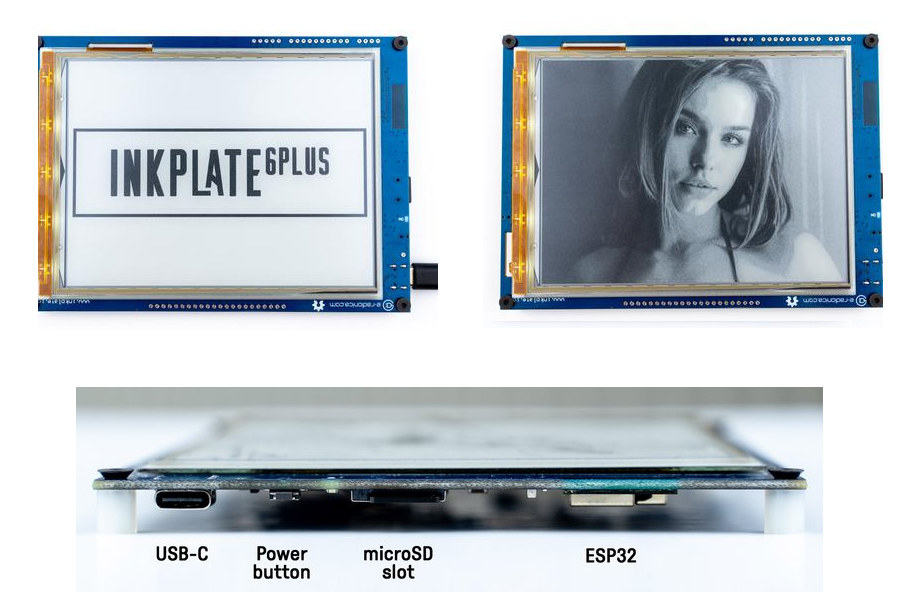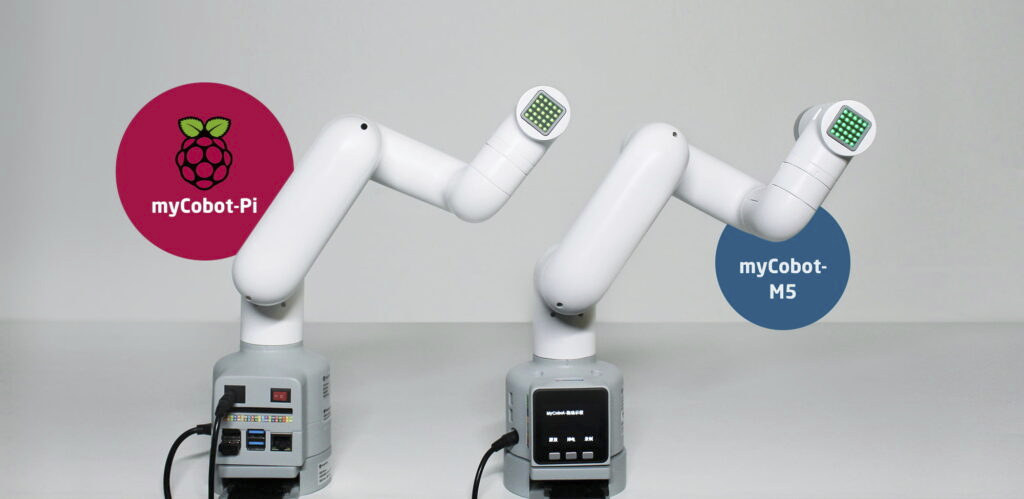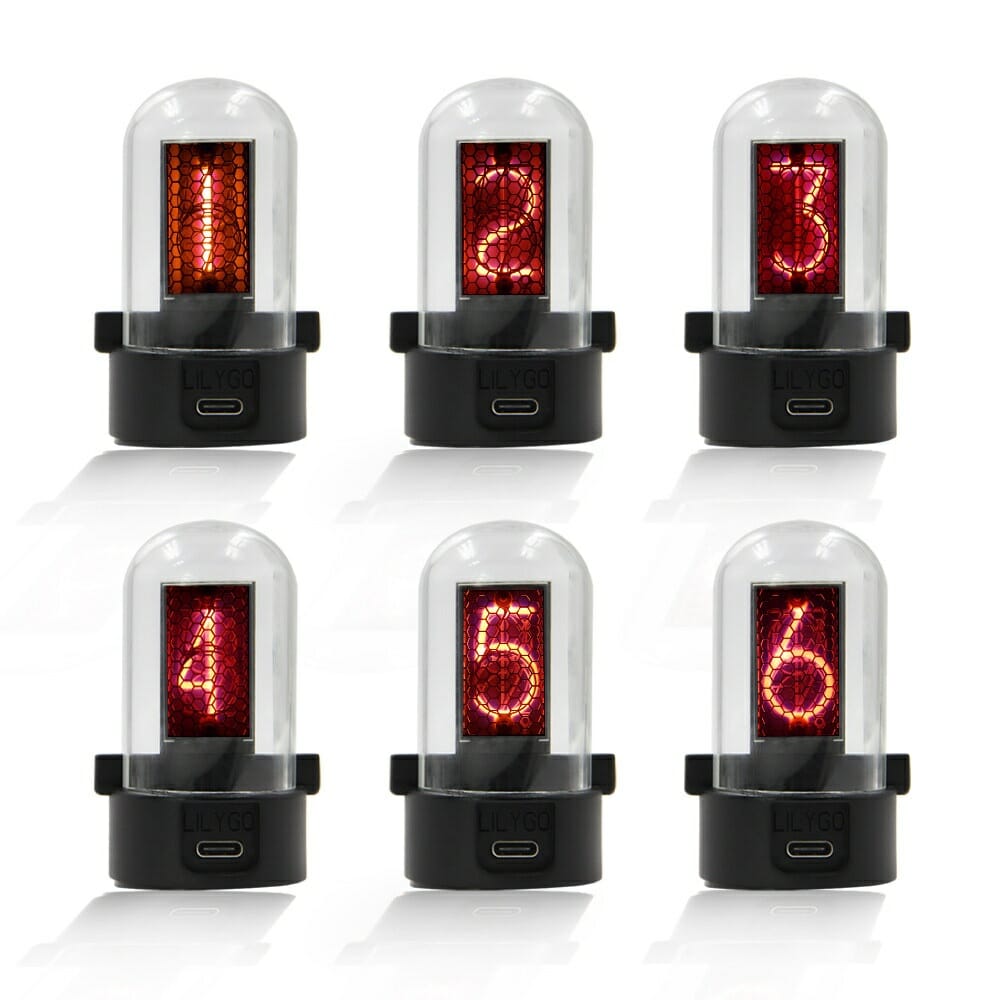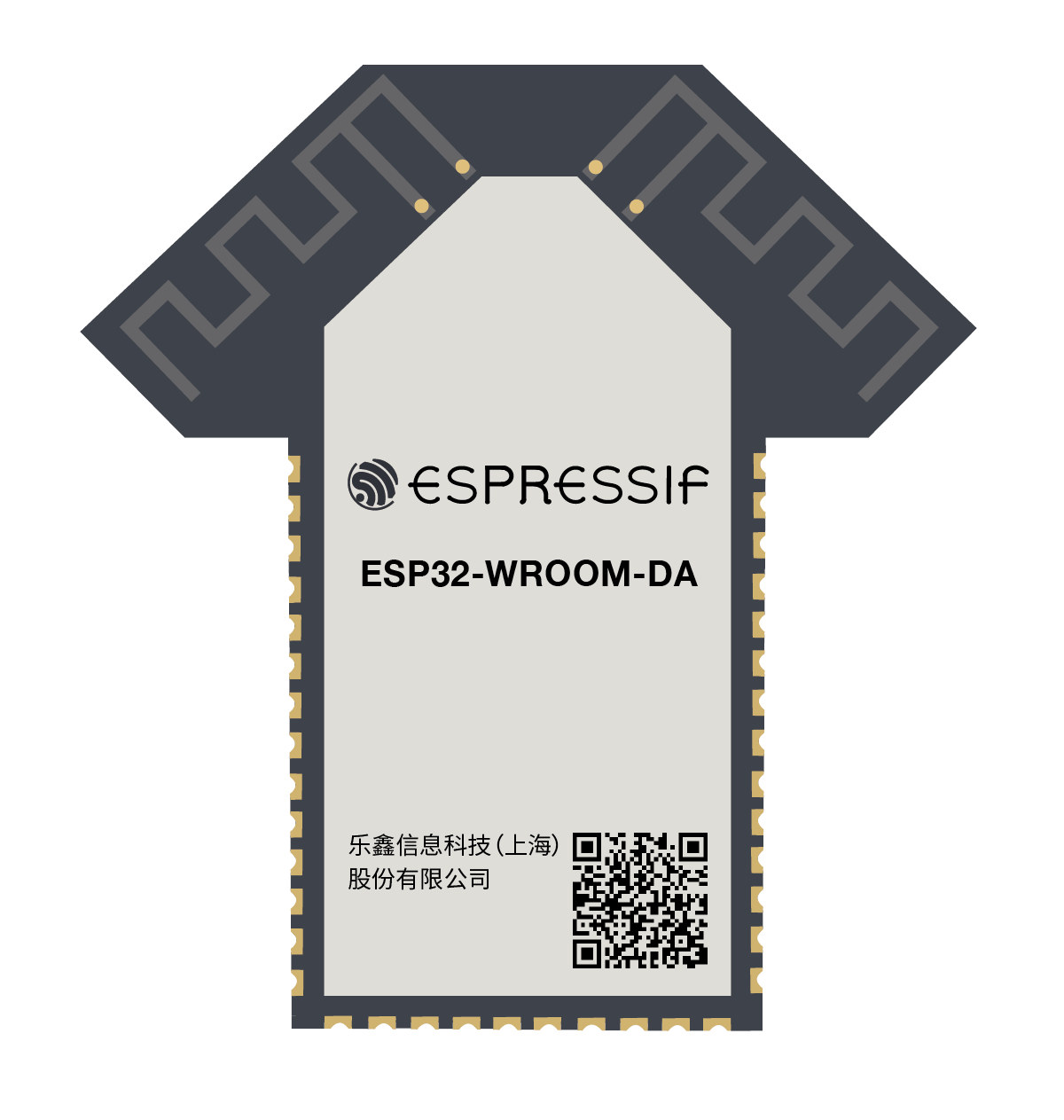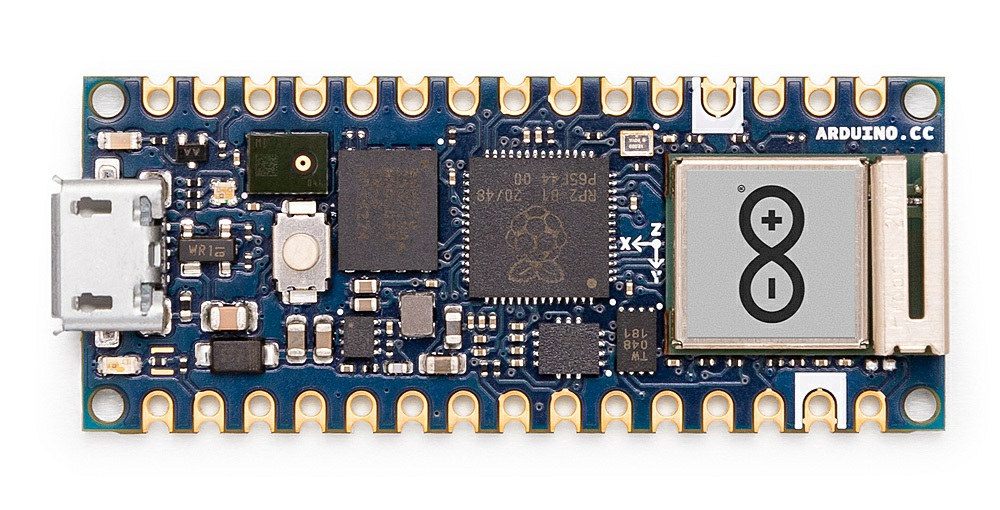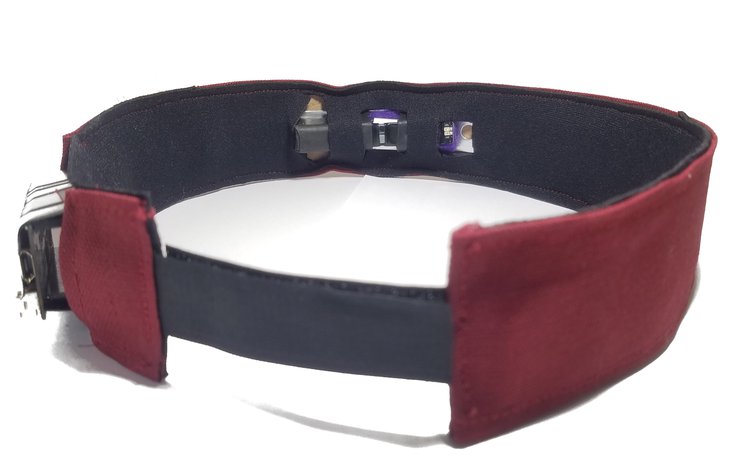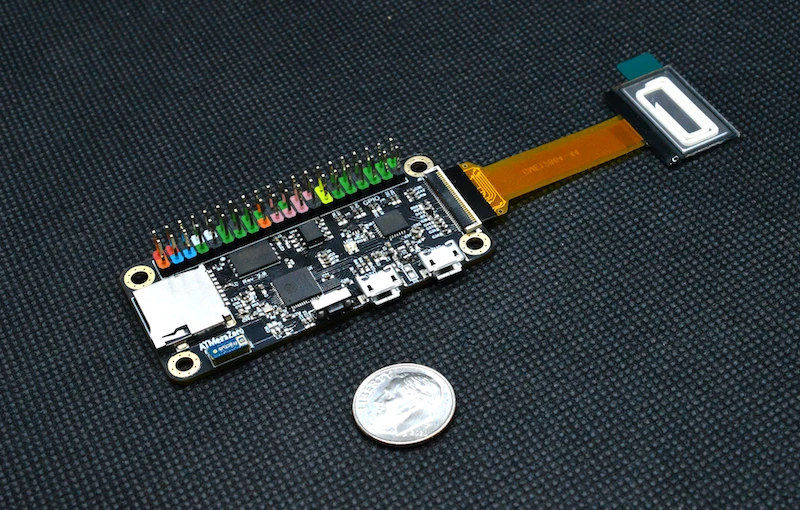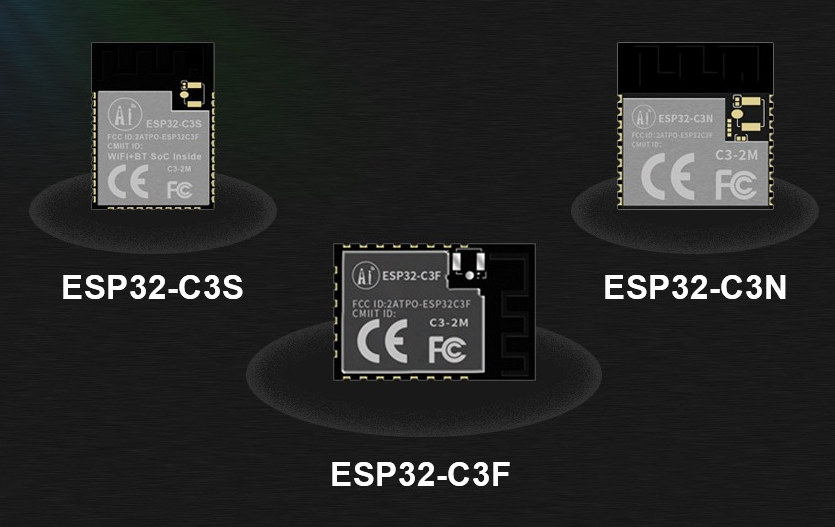Inkplate 6PLUS is an updated version of Inkplate 6 ESP32 powered 6-inch ePaper display that was introduced in 2019, wand comes with a higher 1024 x 758 resolution, and the addition of a touchscreen and a frontlight. Just like the original product, Inkplate 6PLUS makes use of recycled e-paper displays without thousands of screens currently in stock. Refresh performance per pixel is faster and similar to Inkplate 10, which leads to a complete screen refresh being about as fast as on the original Inkplate 6 despite the higher resolution. Inkplate 6PLUS specifications: Wireless module – ESP32 WROVER module with dual-core ESP32 processor with Wi-Fi 4 & Bluetooth 4.0 (BLE) connectivity, 8MB PSRAM, 4MB flash External storage – MicroSD card socket Display – 6-inch, 1024 x 758 e-paper display with support for grayscale, partial updates, and quick refresh cycles 1.27 second refresh time in black & white mode 1.52 second refresh […]
MyCobot robotic arm is offered with Raspberry Pi 4 or M5Stack ESP32 modules
Elephant Robotics’ MyCobot robotic arm was introduced last year with M5Stack Atom & Basic ESP32 modules with 6-degrees of freedom, a 250 grams max payload, available now for $599. The company has launched a new $699 version – MyCobot-Pi – with most of the same features, except for an upgrade to Raspberry Pi 4B which offers more performance and flexibility. Both versions of MyCobot arm robotic arm support accessories such as a gripper and a suction pump attachable through a LEGO connector, but while the original version – MyCobot-M5 – relies on Arduino programming, the new MyCobot-Pi runs Debian/Ubuntu and ROS operating systems with image recognition algorithms that can work with a variety of cameras. Since we’ve missed last year’s announcement, we’ll cover both models in this article. MyCobot Robotic Arm Despite the mechanical parts being the same, the specifications for MyCobot-M5 and MyCobot-Pi differ quite a lot: Controller MyCobot-M5 […]
T-Nixie Tube is an ESP32 based Nixie Tube lookalike
I tend to see Nixie Tube projects regularly as I spend my days going through the news, and the projects, usually some sort of clock, typically look pretty neat. But although Nixie Tubes can still be purchased online, they are not mass-produced anymore, which may explain why LilyGo decided to create a “fake” Nixie Tube, or let’s call it a lookalike, with T-Nixie Tube that comes with an IPS LCD display driven by an ESP32 WiFi & Bluetooth WiSoC. T-Nixie Tube specifications: Wireless Module – TTGO T-Micro32 module with ESP32 V3 Bluetooth and WiFi processor, 4MB Flash Display – 1.14-inch IPS LCD display covered by glass tube USB – USB Type-C port for power and programming Expansion – 4-pin I2C/UART Grove? connector for T-WATCH sensor kit or T-FH interface sensor modules Misc – PCF8563 RTC, IR receiver, TTP223 touch button, Reset button Power Supply – 5V via USB-C port Dimensions […]
ESP32-WROOM-DA dual PCB antenna WiFi module aims for longer range, better reliability
Espressif Systems ESP32-WROOM-DA is another ESP32 based WiFI & BLE module with a twist as its dual PCB antenna design aims to provides a longer range and more reliable connectivity by automatically switching to a specific PCB antenna depending on signal strength. The new module features ESP32-D0WD-V3 dual-core Xtensa LX6 dual-core processor with a maximum frequency of 240 MHz, along with 520 KB of SRAM and 448 KB of ROM, and has been designed to be pin-to-pin compatible with ESP32-WROOM-32E module found in products such as Pico Wireless, in order to ease migration between the two modules. Espressif did not provide detailed specifications for the new WiFi module, but assuming it’s mostly based on ESP32-WROOM-32E design, ESP32-WROOM-DA should have the following key features & specifications: WiSoC – Espressif Systems ESP32-D0WD-V3 embedded, Xtensa dual-core 32-bit LX6 microprocessor, up to 240 MHz with 448 KB ROM for booting and core functions, 520 […]
Arduino Nano RP2040 Connect WiFi & Bluetooth board launched for $25.50
The Arduino Nano RP2040 Connect board was announced the day of Raspberry Pi Pico launch as one of the third-party boards featuring Raspberry Pi RP2040 dual-core Cortex-M0+ microcontroller. At the time all we had was renders of the board, later on, the company showcased some mass product photos, and then released Arduino Core mbed 2.0 for the board last month. But it’s only today that it has become possible to purchase Arduino Nano RP2040 Connect board for $25.50 on Arduino store with headers. Nano RP2040 Connect specifications: MCU – Raspberry Pi RP2040 dual-core Cortex M0+ microcontroller @ 133 MHz with 264 kB of embedded SRAM Storage – 16MB Flash IC (AT25SF128A) Connectivity – WiFi 4 & Bluetooth LE via Nina W102 uBlox module (Yes, that’s an ESP32 module.) USB – Micro USB port I/Os via 2x 15-pin headers (through and castellated holes) 20x digital I/O pins, 20x PWM pins, 20x […]
HEGduino V2 supports fNIRS and Blood-Flow Monitoring (Crowdfunding)
AlasKit has launched a crowdfunding campaign on Crowd Supply for HEGduino V2. The device features noninvasive optical imaging through fNIRS (Functional near-infrared spectroscopy), apart from its brain blood flow monitoring functionality. We saw the previous version of the HEGduino in September 2019 which only supported blood flow monitoring. But the HEGduino V2 also monitors breathing, heart rate, and skin temperature. HEGduino V2 has a MAX86141 optical pulse oximeter cum heart-rate sensor for incorporating Heart Rate Variability (HRV) training. It also allows breath and skin temperature monitoring. The sensor has a specification of 2×4096 SPS sensing with a 19-bit resolution which is a bit higher than its previous version. As HEGduino V1 had an 860 SPS sensing with a 16-bit resolution. However, the practical application observes even lesser values for HEGduino V1. Setup of HEGduino V2 The device also comes with an ESP32 breakout board with rechargeable battery support. The board […]
ATMegaZero ESP32-S2 board supports OLED displays
EspinalLab ATMegaZero board was introduced last year with Raspberry Pi Zero form factor, the Arduino Leonardo compatible, 16 MHz Microchip ATmega32U4 microcontroller, and a connector for an optional OLED display. The company is now back with an update following the same form factor with ATMegaZero ESP32-S2 board equipped with a more powerful ESP32-S2 single-core processor @ 240 MHz with WiFi connectivity, and most of the same features, including OLED display support, plus a micro USB OTG port and an RGD LED. ATMegaZero ESP32-S2 board specifications: WiSoC – Espressif Systems ESP32-S2 single-core processor @ 240 MHz with WiFi RAM – 8MB PSRAM Storage MicroSD card 256Mbit (32MB) SPI Flash (note: only 16MB can be used for now due to firmware limitations) Display – 32-pin OLED display port compatible with 30-pin SSD1306 and SH1106 based displays Wireless Connectivity – 2.4 GHz WiFi 4 up to 150 MHz with 3D antenna USB – […]
AI-Thinker introduces 5 ESP32-C3 modules pin compatible with ESP8266 & ESP32 modules
ESP32-C3 is the first RISC-V wireless SoC from Espressif Systems, and at the time of the initial announcement promised to cost about the same as ESP8266 but adds support for Bluetooth 5.0 LE besides 2.4 GHz WiFi, and retain software compatibility through the ESP-IDF framework. We were also told the goal was to provide ESP8266 compatible modules, and AI-Thinker has just announced five new ESP32-C3 modules compatible with earlier ESP8266 & ESP32 modules as shown in the table below. The table above is quite low resolution but that’s the best I could obtain from the company… It’s also a complete mess, not showing all alternative ESP8266 or mistaken in board sizes. So I’ll try to give a short summary of differentiating features and equivalent ESP8266/ESP32 modules: ESP32-C3F is meant to replace ESP-12F with a 24 x 16 mm form factor. It does add an IPEX connector, besides the PCB antenna. […]


